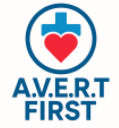Learning Objectives: A.V.E.R.T. Harm
By the end of the program, participants will be able to:
1. Awareness & Recognition
-
Identify early warning signs of physical, mental, relational, and systemic harm.
-
Understand how stress, vulnerabilities, and unaddressed risks contribute to harm.
-
Recognize hidden or subtle risk factors in everyday settings and clinical environments.
2. Assessment & Evaluation
-
Apply structured frameworks such as A.B.C.D.E.™, H.A.R.M.™, and S.C.A.N. to assess the level and urgency of risk.
-
Differentiate between acute, chronic, relational, and cumulative harm.
-
Evaluate environmental, social, and systemic factors that may amplify risk.
3. Response & Intervention
-
Take timely, role-appropriate action to prevent harm or reduce its impact.
-
Implement strategies to directly intervene or connect individuals with appropriate support.
-
Utilize communication techniques to engage, affirm, and guide individuals at risk safely and effectively.
4. Leadership & Collaboration
-
Demonstrate shared responsibility for harm prevention across community, clinical, and public health settings.
-
Collaborate effectively with peers, professionals, and systems to strengthen protective networks.
-
Advocate for systemic changes and policies that reduce emerging risks and vulnerabilities.
5. Reflection & Resilience
-
Reflect on personal biases, assumptions, and barriers to action that may impede harm prevention.
-
Practice self-care and resilience strategies to sustain vigilance and effective response.
-
Integrate lessons learned into daily life, professional practice, and community engagement.
“See the risk. Assess the situation. Act with clarity. Connect to help. Build safer communities.”




